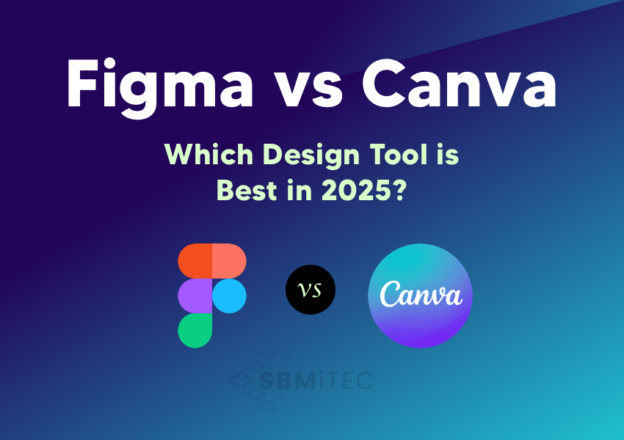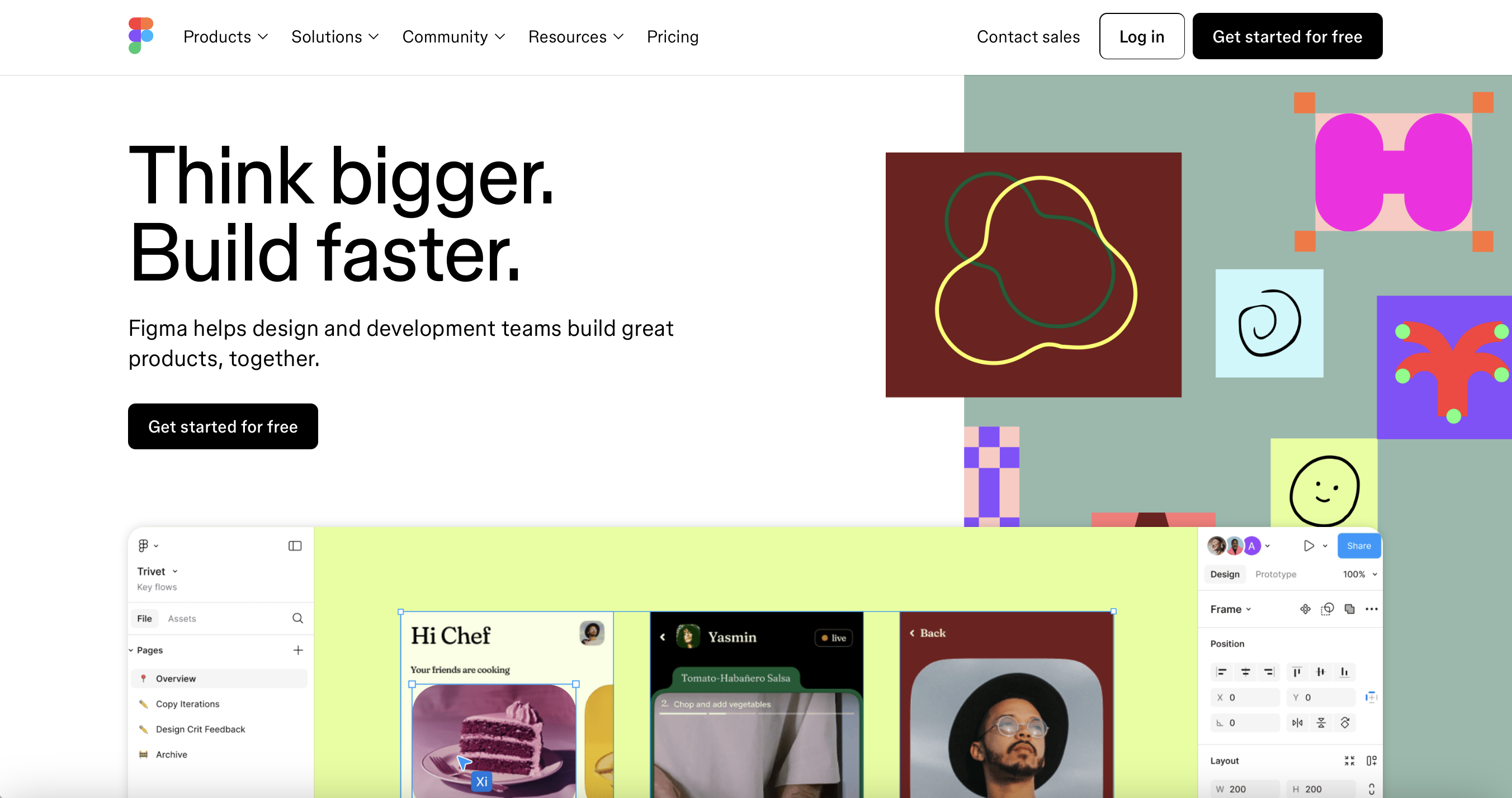Figma vs Canva: Which Design Tool is Best in 2025?

When selecting a web design tool, it’s important to choose one that aligns with your specific needs. Figma vs Canva is a common comparison among designers, as both tools serve different purposes. Figma is the go-to choice for UI/UX designers working on web and app design, offering advanced prototyping and collaboration features. On the other hand, Canva is ideal for creating quick graphic designs, social media visuals, and marketing materials with its user-friendly, template-based approach. Understanding the differences between Figma vs Canva will help you determine the best tool for your design projects.
In this detailed comparison, we’ll explore Figma vs Canva in terms of features, pricing, pros, cons, and their best use cases to help you decide which is best for your needs.
What is Figma?

Figma is a cloud-based UI/UX design tool that allows designers to create wireframes, prototypes, and high-fidelity designs. It is known for its collaborative features, which make it ideal for teams working on web and app development projects. Figma enables designers to create responsive designs with precision and allows real-time editing and feedback.
Key Features of Figma
- Real-time Collaboration – Multiple users can edit designs simultaneously.
- Cloud-Based – No need to install software; access projects from anywhere.
- Vector-Based Editing – Ensures high-quality, scalable graphics.
- Auto Layout – Makes responsive design easier.
- Prototyping Tools – Create interactive prototypes without coding.
- Plugins & Integrations – Extend functionality with third-party tools.
- Version Control – Track changes and restore previous versions.
What is Canva?

Canva is an easy-to-use graphic design platform that helps users create social media graphics, presentations, posters, and other visual content. It is template-based, making it beginner-friendly for those with little to no design experience.
Key Features of Canva
- Drag-and-Drop Editor – Simple interface for quick design creation.
- Pre-made Templates – Thousands of professionally designed templates.
- Stock Images & Icons – Large library of free and premium assets.
- Collaboration Tools – Teams can edit and comment on designs.
- Brand Kit – Store brand colors, fonts, and logos for consistency.
- AI-Powered Tools – Magic Resize, Background Remover, and more.
- Export Options – Download in multiple formats (PNG, JPG, PDF, etc.).
Figma vs Canva: Feature Comparison
| Feature | Figma | Canva |
|---|---|---|
| Best For | UI/UX design, web & app prototyping | Graphic design, marketing materials |
| Collaboration | Real-time multi-user editing | Shared team workspaces |
| Accessibility | Cloud-based, works in the browser | Web-based & mobile apps |
| Design Control | High level of customization | Template-driven design |
| Prototyping | Yes, built-in | No, only static designs |
| Plugins | Extensive plugin support | Limited add-ons |
| AI Tools | No | Yes (Background remover, Magic Resize) |
| Learning Curve | Steeper, requires some design knowledge | Easy, beginner-friendly |
| Export Options | HTML, SVG, PNG, JPG, PDF | PNG, JPG, PDF, MP4, GIF |
Figma vs Canva: Pricing Comparison
Figma Pricing
- Free Plan – Basic features with limited projects and editors.
- Figma Professional – $12/month per editor (Unlimited files, team collaboration).
- Figma Organization – $45/month per editor (Advanced collaboration, analytics, security controls).
Canva Pricing
- Free Plan – Basic templates and editing tools.
- Canva Pro – $12.99/month per user (Premium templates, brand kits, AI tools, background remover).
- Canva for Teams – Starts at $14.99/month (Advanced team collaboration tools).
Figma vs Canva: Pros and Cons
Pros of Figma
✅ Best for UI/UX and web design projects.
✅ Real-time collaboration and version control.
✅ Advanced prototyping and design tools.
✅ Works directly in the browser with no installation.
✅ Extensive plugin support.
Cons of Figma
❌ Steep learning curve for beginners.
❌ No built-in AI tools like Canva.
❌ Requires an internet connection for access.
Pros of Canva
✅ Simple drag-and-drop interface for beginners.
✅ Thousands of templates for fast design creation.
✅ AI-powered tools for quick edits.
✅ Great for social media, marketing, and branding.
✅ Affordable pricing for individuals and teams.
Cons of Canva
❌ Limited customization compared to Figma.
❌ No prototyping features for UI/UX design.
❌ Works best for static designs, not interactive layouts.
Which Tool is Best for Web Design?
Choose Figma if:
- You are a UI/UX designer working on websites or apps.
- You need a tool with advanced prototyping and interactive features.
- You work with a team and require real-time collaboration.
- You want complete control over design elements.
Choose Canva if:
- You need a quick and easy way to create marketing materials.
- You are a beginner with no prior design experience.
- You don’t need advanced customization or prototyping.
- You want access to AI-powered design tools.
Conclusion
Both Figma and Canva are excellent tools, but they serve different purposes. Figma is the best choice for professional UI/UX designers working on web and app design, while Canva is ideal for marketers, social media managers, and beginners looking for an easy way to create stunning visuals.
If you’re serious about web design, Figma offers better flexibility, prototyping, and collaboration features. However, if you need fast, beautiful graphics for social media, ads, or presentations, Canva is the way to go.
Ultimately, your choice depends on your design needs and skill level. Which tool do you prefer? Let us know in the comments!
Discuss Your Next Web Project with Us
Frontend & WordPress development made easy. We transform your ideas and designs into clean, functional code.